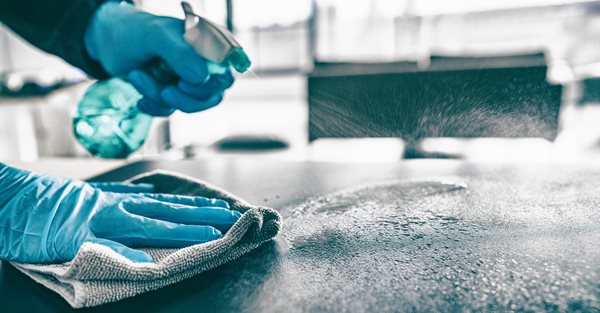
Disinfection plays a crucial role in maintaining a healthy and safe environment, especially in the face of global health challenges. Understanding what disinfection is, how it works, and implementing effective methods is essential for safeguarding our homes, workplaces, and public spaces. In this comprehensive guide, we will delve into the various aspects of disinfection, answering common questions like what it is, how it works, how to do it, and why it’s important.
What is Disinfection?
Disinfection is the process of eliminating or reducing harmful microorganisms, such as bacteria, viruses, and fungi, from surfaces, objects, or the air. It is a vital practice to prevent the spread of infectious diseases and maintain a clean and sanitary environment. Disinfectants, which are chemical agents, are commonly used in this process to destroy or inhibit the growth of these microorganisms.
How Does Disinfection Work?
Disinfection works by targeting and disrupting the structure of microorganisms 除甲醛, rendering them inactive or incapable of reproducing. Different disinfectants have varying mechanisms of action, including damaging cell walls, proteins, or nucleic acids. Understanding the specific disinfectant’s mode of action is crucial for its effective use. Common disinfectants include bleach, alcohol-based solutions, hydrogen peroxide, and quaternary ammonium compounds.
How to Disinfect Properly:
- Identify High-Touch Surfaces: Focus on frequently touched surfaces such as doorknobs, light switches, countertops, and electronic devices, as these areas are more likely to harbor harmful microorganisms.
- Choose the Right Disinfectant: Select a disinfectant that is suitable for the surface you are cleaning. Some surfaces may be sensitive to certain chemicals, so it’s important to read and follow the product instructions carefully.
- Follow Contact Time Guidelines: Each disinfectant has a specific contact time, which is the duration it needs to remain on a surface to effectively kill the targeted microorganisms. Be sure to adhere to these guidelines for optimal results.
- Ventilate the Area: When using disinfectants, ensure proper ventilation to reduce exposure to fumes. Open windows or doors to allow fresh air to circulate.
How Can You Make Disinfection a Routine?
Incorporating disinfection into your routine is a proactive approach to maintaining a healthy living or working space. Consider the following tips:
- Create a Schedule: Develop a regular disinfection schedule for high-traffic areas and shared spaces. Consistency is key to preventing the buildup of harmful microorganisms.
- Educate and Involve Others: Ensure that everyone in your household or workplace is aware of the importance of disinfection. Encourage collaboration to create a collective effort in maintaining cleanliness.
- Provide Access to Hand Sanitizers: Placing hand sanitizers in easily accessible locations encourages regular hand hygiene, complementing the overall disinfection strategy.
What Are the Benefits of Regular Disinfection?
- Disease Prevention: Regular disinfection reduces the risk of infectious diseases, protecting individuals from harmful microorganisms.
- Improved Indoor Air Quality: Disinfecting surfaces and air can contribute to better indoor air quality, promoting a healthier living or working environment.
- Peace of Mind: Knowing that your surroundings are regularly disinfected provides peace of mind, especially during times of heightened health concerns.
Conclusion:
Disinfection is a fundamental practice in maintaining a clean and safe environment. By understanding what disinfection is, how it works, and implementing effective methods, individuals can contribute to the well-being of themselves and those around them. Making disinfection a routine ensures a proactive approach to health and safety, creating a healthier and more comfortable living or working space.